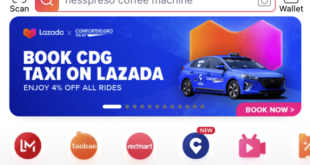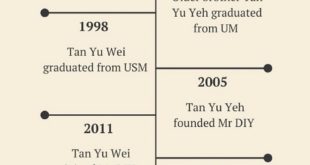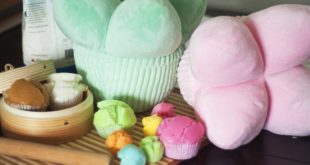If the number of trials for self-driving vehicles in Singapore is anything to go by, the future of driving in the Republic is, it seems, driverless.
Recent years have also seen the nation warmly embrace electric vehicles (EVs), with plans to phase out all vehicles with internal combustion engines by 2040. These twin trends find themselves combined in ride-hailing, which straddles both public and private transport.
Currently, Singapore’s ride-hailing market is dominated by tech unicorns Grab and Gojek – the former having launched in 2013, and the latter entering the market in 2018. However, a new and powerful challenger may soon join the fray: Tesla.
The US automaker presents a double threat: it is both a major player in the EV market, and has ride-hailing ambitions, which will see it leverage its autonomous vehicle technology and privately-owned Teslas to create robotaxi networks in some markets as soon as this year.
To be clear, Tesla cars are not yet able to drive fully autonomously, as the company is still in the process of refining its self-driving AI. Drivers must pay to access the self-driving feature, and are still required to remain behind the wheel while the tech is in use.
While Gojek has been quiet on the self-driving front (at least in Singapore), Grab is more involved in this front. Its president Ming Maa previously shared that the firm aims to commercialise its robotaxi service “definitely earlier” than 2022.
Tesla is also expected to enter Singapore this year with its Model 3 cars, as drivers here gradually switch to EVs following the government’s push. The American automaker could well make its bid for ride-hailing dominance once its vehicles gain a foothold in the market.
Grab Versus Tesla On Their Self-Driving Ambitions
On the autonomous driving front, Tesla is more deeply invested than Grab.

Since 2016, the company has been developing Tesla Autopilot: a vision-based driver assistance feature that’s a preliminary version of its self-driving artificial intelligence (AI) program. It uses eight cameras, radar and ultrasonic sensors to enable its vehicles to navigate the street.
Tesla’s tech has been criticised by experts as less safe, but more adaptable and scalable than LiDAR, the dominant sensor-based technology in autonomous vehicle development.
On the other hand, Grab’s involvement with self driving vehicles is limited to partnerships. The super-app partnered driverless taxi provider NuTonomy to run robotaxi trials in Singapore in 2016, and was in talks with Chinese ride-hailing giant Didi Chuxing on self-driving partnerships in 2018.
Since the self-driving projects tested in Singapore are mainly LiDAR-based, Grab only needs to partner with an approved service provider, such as NuTonomy, to roll out its robotaxi offering, while regulatory approval of Tesla’s vision-based tech could be trickier to obtain.
However, it’s also possible that Singapore’s Smart Nation drive means the government may be more open to new technologies, and Tesla’s approval could come quicker than expected.
It may also be possible to interpret that allowing sales of the Model 3 – which contains opt-in access to the self-driving tech – could be a positive signal that the carmaker’s tech has stood up to some degree of regulatory scrutiny.
One edge Tesla’s tech has over LiDAR is the quantity of real-world data that has been used to train the self-driving AI.

According to Bloomberg, Tesla collected over three billion miles of driving data in 2020, while Aptiv — which is affiliated to NuTonomy — collected only over a million miles. Tesla can take advantage of this data lead to refine its AI and achieve the safety levels governments require.
Tesla Sells Cars, But Grab Doesn’t Own Any
Assuming both Grab and Tesla both clear safety regulations and roll out autonomous ride-hailing at the same time, the next battle will lie on costs and network size.
Grab, the most established ride-hailing player in Singapore, has already developed a mature ecosystem of driver-partners.
On the other hand, Tesla is a new entrant, and the success of its robotaxi network hinges — among other things — on the number of drivers that subscribe.
With Tesla’s priced on par with luxury sedans, it remains to be seen if owners will be motivated enough by the promise of additional income to release their cars onto the network.
Nevertheless, a national shift to EV use means a larger pool of potential Tesla buyers, and therefore network participants. In addition, Tesla has indicated that it is willing to license its self-driving software, which could possibly see its network beefed up with cars by other brands.
Cost-wise, Tesla has the advantage due to its business model. It’s primarily selling cars, so the price of self-driving software and hardware is borne by the buyer.
Grab’s costs, on the other hand, involve obtaining an entire self-driving fleet, or installing LiDAR tech on its driver partners’ vehicles. This means a robotaxi network will involve significantly higher costs that, if passed on to drivers or price-sensitive consumers, could impact business.
Grab Might Reign Now, But Tesla Can Catch Up

With mass adoption of autonomous vehicles and EVs several years away, it may be some time before ride-hailing players duke it out in the robotaxi sphere, but based on their investments in the area, it’s Grab and Tesla that are competing to come out on top.
In the short run, Grab is the likely winner, as Tesla’s ability to roll out its ride-hailing network hinges entirely on regulatory clearance, while the super-app has the flexibility to use whatever software has been approved.
In addition, Tesla needs time to build up market share and in turn, its ride-hailing network, while Grab already has an established ecosystem.
Still, Tesla is better placed to succeed in the medium- to long-term, as its proprietary self-driving tech is more refined, scalable and cost efficient than Grab’s.
Therefore, if both companies obtain government approval at around the same time, the carmaker might just give the super-app a run for its money.
On the flipside, Grab might not even develop its own robotaxi, but partner Tesla instead of competing. This would then be a win-win situation for both parties.
Featured Image Credit: PR Daily / Grab



